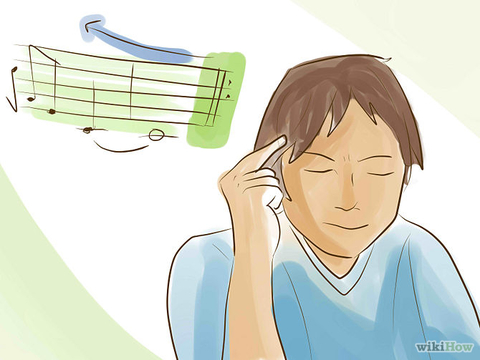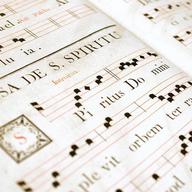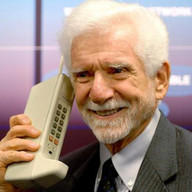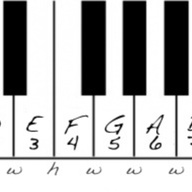How To Memorize Music |

Although I can read music, I hate it. It's slow, uncomfortable, distracting and entirely unnecessary. Music is already quite memorable and only requires a few hacks to get into your long-term memory. Here is the process which I use that has evolved over the past few years.
I hope you find it useful.
1. Find the MOTIVE behind the music.
Your goal here is to determine the reason WHY the artist wrote the piece. Throw out the sheet music and listen to a recording of the piece. Ask yourself the following questions.
- How does it make you feel?
- What images does it elicit?
- How does it progress and flow?
- Why did the artist write this piece?
It can also be very useful to do some background research about the piece and the artist. What was happening in his or her life when he wrote the piece?
2. Identify the FORM of the music.
Again, just listen to the piece over and over. The most important goal of this step is to identify the tonic and mode (major, minor, blues, lydian etc) of the piece. You will also recognise the genre and structure which are key parts of the music's form.
How To Memorize Music- What instruments and rhythms are used?
- What structure does the piece use? (ABBA / AC / Sonata / Rondo etc)
- What is the tonic? (try humming it, then find that note on your instrument)
- What is the mode? (you need to know the full set of notes deployed in the song)
For the mode you really want to know if the full set of harmonies used throughout the piece. Some songs will borrow chords or use harmonic minor for chords and melodic minor for the melody. But don't get hung up on this. As long as you have your tonic you can go onto the next step.
3. Chunk the music into sections and assign each section an image.
You are still only listening to the music. You don't want to look at any sheet music yet. The point here is divide the song into digestable chunks for focused study and better recall. Chunks usually end up being 32 beats long, but not always - it depends on the music. Assign a vivid image or emotion to each chunk. Hearing the first few notes of a piece is essential for recalling the rest of the song, so pay particular attention to the chunks that start new sections.
4. Layout your chunks using a memory palace.
I place a single chunk at each location in a memory palace. Associating the chunk to the location is not usually difficult because you already have a clear image of the chunk. You can also use an imaginary memory palace which is tailored to your piece. Or, as I tend to do now, create a 'film clip' instead of a memory palace but make sure in that clip your chunks have distinct settings.
I've had some questions about the memory palace which is probably something new to a lot of people. The memory palace is only to remember the sequence of chunks. I don't remember specific notes or chords using the memory palace, just images, colours, emotions, sounds, scents, textures and anything else that I associate with that chunk of music.
5. Study each chunk in depth.
If you need to, you can now refer to the sheet music but don't fall into the trap of trying to memorize the notes. Look for the patterns.
- What is the harmonic progression?
- Why did the artist choose that progression?
- How do the voices fit with the harmony?
- Is there arpeggiation?
As you study each chunk, practise it to get it into your muscle memory. This is very important. You can actually use the information in your muscle memory to extract information about the piece. For example I remember the harmonic progressions of my guitar pieces by the finger patterns I use.
If you are using sheet music to study each section, do not put it near your instrument. Put it in the toilet or downstairs or somewhere you don't want to go each time you forget something. You'll be more motivated to remember because of the cost of going to retrieve that information.
5. Make flashcards for each pattern your find in a chunk (optional).
Do not try to remember every individual notes or beat using flashcards or other mnemonics. Melody and rhythm already *are* mnemonic tools which utilise your tonal and rhythmic memory. Trying to encode it using spatial or visual memory would be like encoding your route to work using longtitudes and latitudes.
You can use flashcards for patterns (especially chord progressions), landmarks in the melody (especially the starting note of each chunk) and any particular sticking points you have, since these are key to recalling the entire melody. I also use flashcards for lyrics, but find them awkward and redundant for recalling rhythms. On the whole I don't rely on them much but making them forces me to focus on specific parts of the piece. You can overdo it though.
I use 'Memory Genius' an Android app which combines flashcards and memory palaces and allows me to deposit flashcards in my memory palace (see 'How To Build and Infinite Memory Palace' for more about that). This is nice because once I have my memory palace set up I can go back to any location and study it in more depth. I just leave some more flashcards there or 'repaint' the location appropriately.
6. Mental play
You have your memory palace, you've studied each chunk and practised on your instrument and you've reviewed all your flashcards for the logistic stuff. You can now play the entire piece from start to finish. But first you need to be able to do it in your head. If you can't do it in your head you can't do it on your instrument.
7. Practise
Now that you have memorized the piece you can apply rote repetition and practise. If you plateau you can always delve back into each chunk to learn more about that chunk or add any embellishments that you skipped over.
You will need to practise a lot... but you knew that already.
8. Teach yourself
Congratulations, you've memorized the piece and can perform it proficiently. The problem is if you stop here you're still likely to forget something unless you play it frequently. That's because you'll be relying too heavily on your muscle memory to perform the music for you. However, there is one more thing you can do to really cement the music in your memory: Teach it to yourself.
The purpose of this step is to force you to recall the music without reference to your muscle memory. There are three ways to do this:
- play the piece in a different key
- play the piece on a different instrument
- play the piece switch (i.e. swap right and left hands, or play your instrument with your unnatural hand)
I call this 'teaching yourself' because it gives me the same feeling I had as a tutor at university when I had to teach my friends the stuff I learnt the year before. It is uncomfortable but it forces you to really know what you're doing. Each of these hacks forces you to go back through the music without relying on your muscle memory.
A simple example
My memory palace for 'Cuando Me Enamoro' is a hotel in Guayaquil. The motive of this song is to offer her more than you have to offer. It's a kind of helplessness.
- I start outside the hotel admiring the Christmas decorations (chunk: oooh oh oh). The feeling in this space is 'those decorations, wow they're beautiful, I want to create something beautiful like that'. My flashcards for this location tells me tonic chord is C# major and this chunk is 2-4-1.
- I enter the hotel and there is a porn star behind the reception (chunk: si pudiera bajarte un estralla del cielo). I feel lost and unworthy, I look at the cieling and I see the stars and the planets from the lyrics. My flashcards have the lyrics and the starting note and the harmonies (2-4-1-5).
- I go to the lobby and there is a massive ship wrecked there (chunk: naufragio de un sentimiento). I want to help, I want to fix the shipwreck.
- I start to ascend the stairs and get a stomach cramp and the scene becomes dark (chunk: pero por dentro). I can't make it up the stairs.
- ... and so on
It's difficult to describe here because my memory palaces are so caught up in images and emotions. Music without lyrics tends to be harder to create images for because you have to infer the meaning yourself and that's why I stress the importance of understand the motive of the piece before you even begin.
Good luck.
About Roger Keays
 |
Roger Keays is an artist, an engineer, and a student of life. He has no fixed address and has left footprints on 40-something different countries around the world. Roger is addicted to surfing. His other interests are music, psychology, languages, the proper use of semicolons, and finding good food. |




